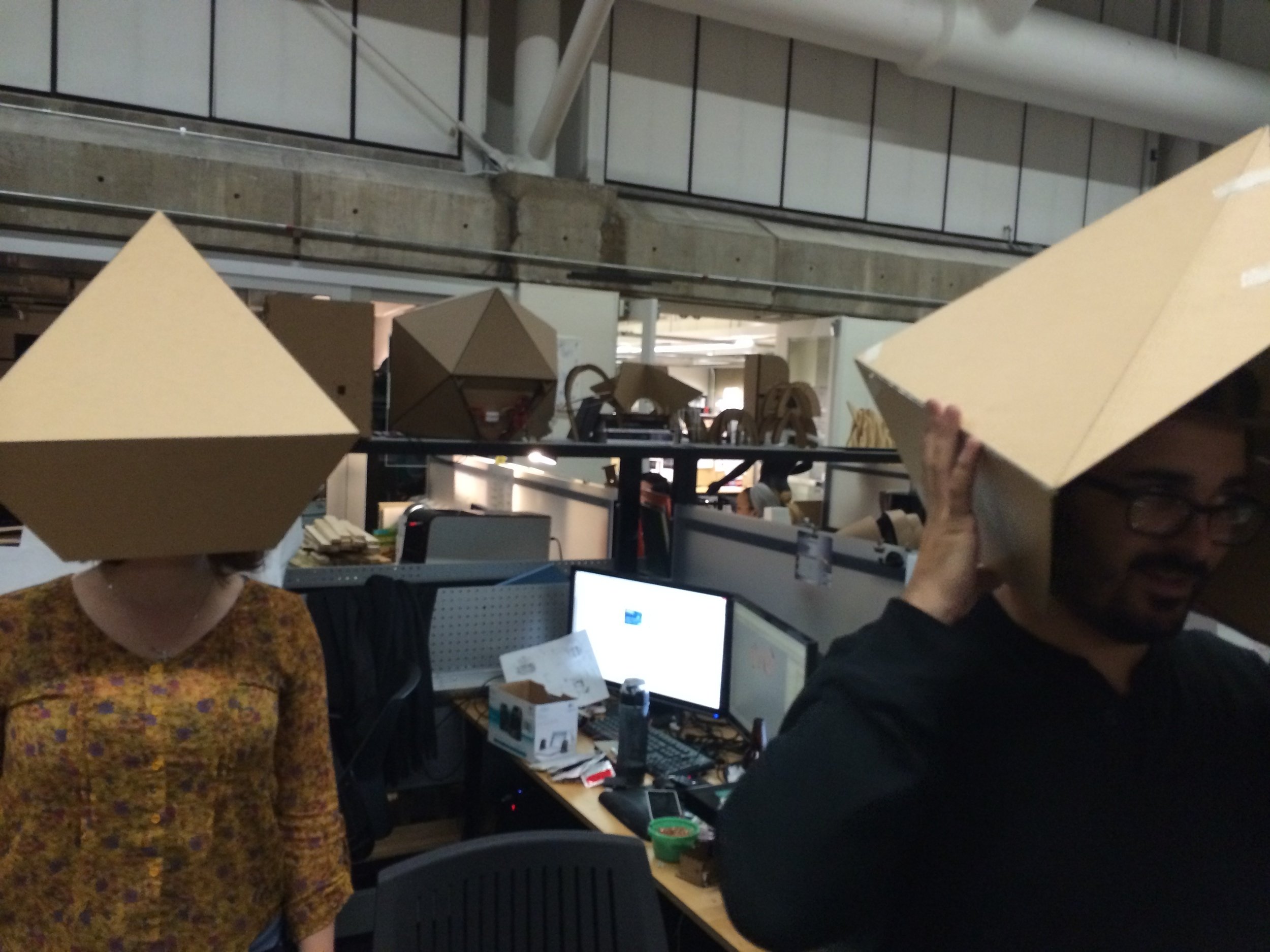
HARVARD GSD
Wearable RobotsArchitectural wearables sensing and shaping space
In an era where digital surveillance permeates our environments, the boundaries between personal space and public observation have become increasingly blurred. This collection of wearable prototypes investigates how garments can serve as dynamic interfaces, mediating the relationship between the body and its surrounding space. By embedding responsive technologies into clothing, these designs challenge conventional notions of privacy, agency, and spatial interaction.
From Krzystof Wodiczko’s and Anne Liu’s studio "Architecture of Cultural Prosthetics" at the Harvard Graduate School of Design.
Spy-der
The SPY-der dress reimagines surveillance by making the act of observation visible and interactive. Equipped with sensors that detect the presence of security cameras, the garment responds by raising its articulated arms, signaling awareness of being watched. As the wearer approaches a camera’s field of view, the arms orient toward the lens, simultaneously confronting and engaging with the observer. This performative response transforms passive surveillance into an active dialogue between the individual and the monitoring systems.







Egoskeleton
Egoskeleton functions as a second skin, designed to protect and empower the wearer in environments saturated with surveillance and social scrutiny. Integrating proximity sensors, the garment reacts to nearby movement by extending its appendages, mimicking gestures that oscillate between defense and invitation. This duality reflects the complex interplay between vulnerability and assertiveness, offering a physical manifestation of personal boundaries in public spaces.
Confessor & Professor
What happens when the opinions of one's mind are difficult to say and fear of physical harm exists, which results in the suppression of thoughts? What if one could express their opinions without physically being there to reduce fear? This is where the project injects itself. The confessor, a helmet worn by the fearful individual who wants to express, and the professor, a person volunteering their physical presence to broadcast this message. This allows the victim to dispel all fear, and talk freely, while giving the courageous volunteer the ability to broadcast their message without direct association with the message.






Pneumanus
Pneumanus explores the intersection of wearables and architecture as co-responsive systems—where the body becomes both interface and input, and the surrounding environment responds in kind.
The project consists of a pneumatic wearable that senses biometric signals—such as breath, stress, or emotional state—and communicates with a spatial membrane that surrounds the wearer. Rather than treating the body and building as separate systems, Pneumanus binds them together in a shared feedback loop, allowing physiological states to inform spatial behavior.
Both the wearable and architectural environment are made of soft, pneumatic structures that shift in form through embedded actuation. As the system receives digital input from the user, the space around them subtly transforms—modulating light, pressure, or enclosure to reflect changing states of being. The result is a living spatial interface: an architecture that doesn’t just house the body, but listens to it.
Omniveillance
We live among second selves—digital mirrors and virtual proxies that blur the line between presence and projection. Omniveillance is a wearable mirror system that embodies this tension, confronting the wearer with a constantly shifting reflection of both their environment and themselves.
Composed of hinged mirrored surfaces, the piece distorts space in real time, refracting the viewer’s surroundings while simultaneously offering fragmented self-perception. It draws from the dual logic of surveillance and sousveillance: the act of watching and being watched, of observing the world while maintaining awareness of oneself within it.
Omniveillance creates a continuous feedback loop—one that collapses the distinction between reflection and observation. As the mirrored planes tilt and fragment, the wearer is placed in a liminal space where self-awareness and environmental perception co-exist, challenging where identity ends and interface begins.






For more information on the research, please visit the Harvard GSD Course Page.